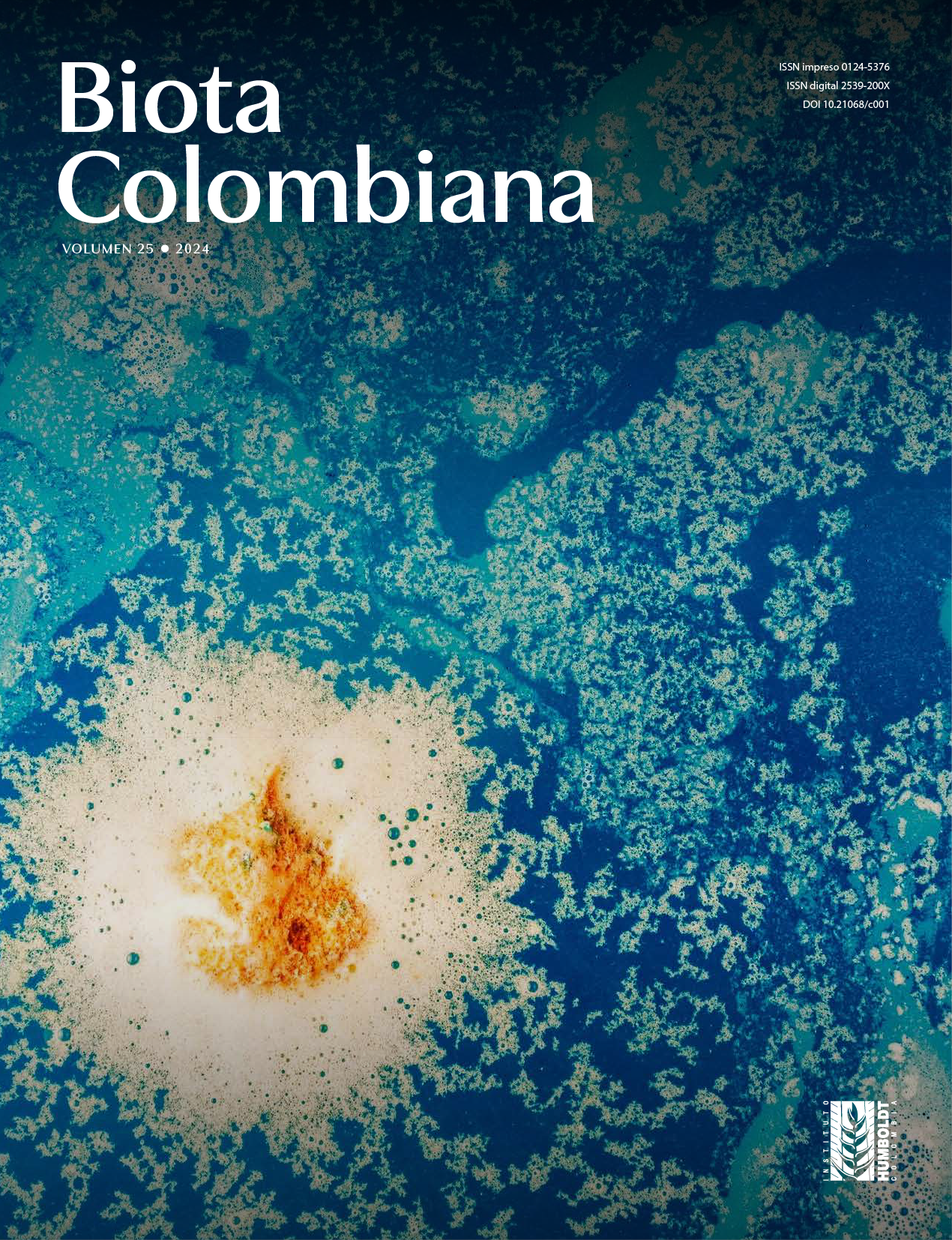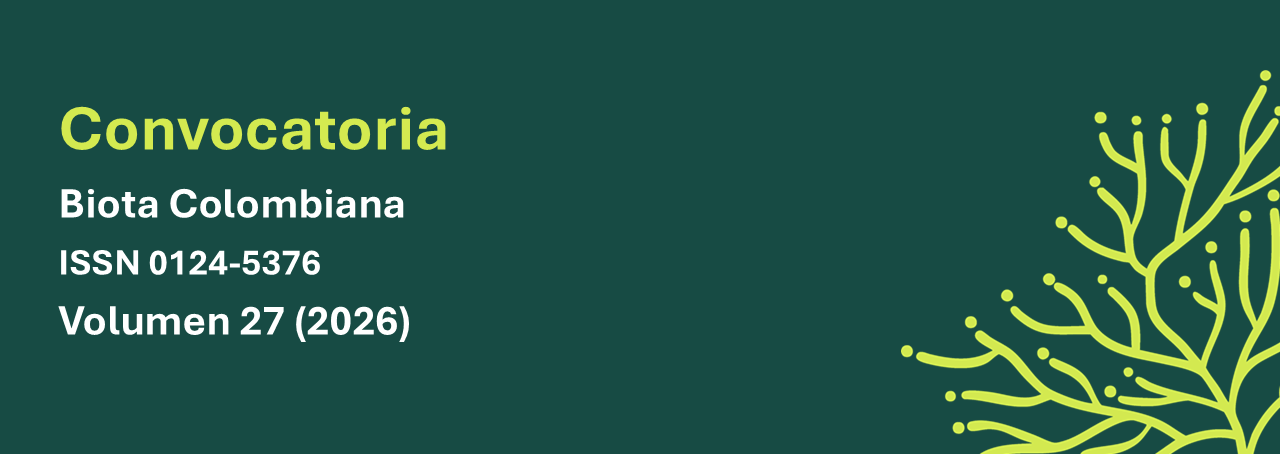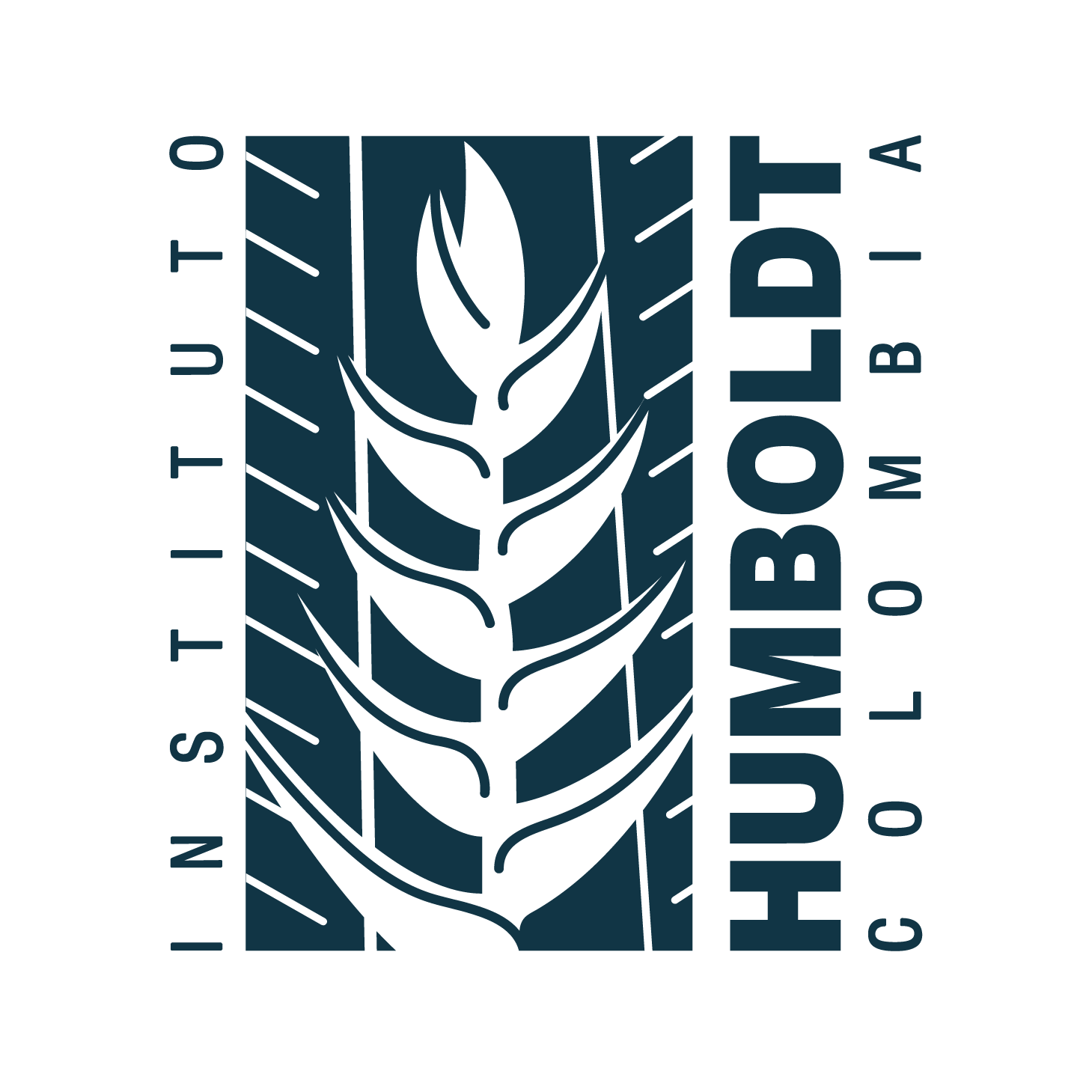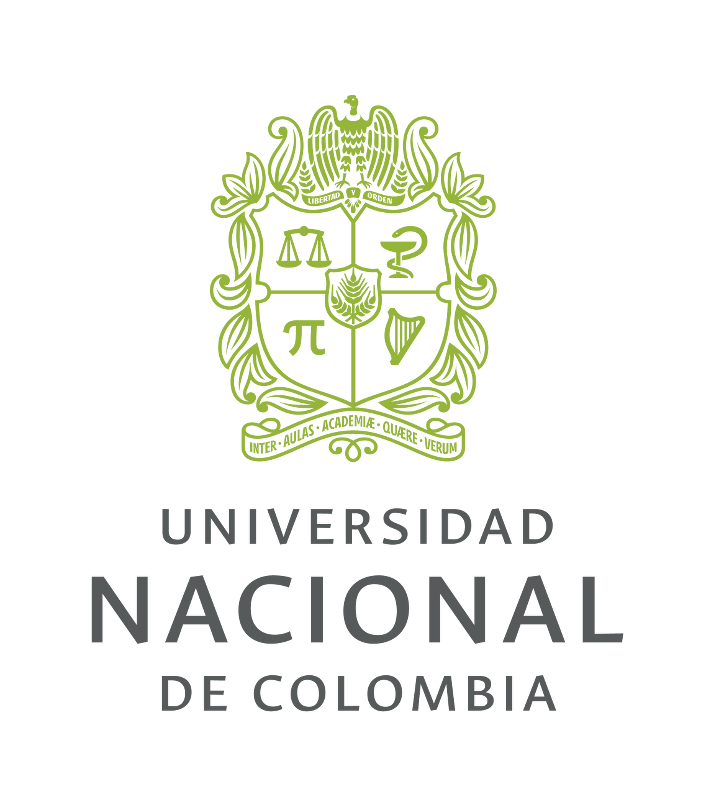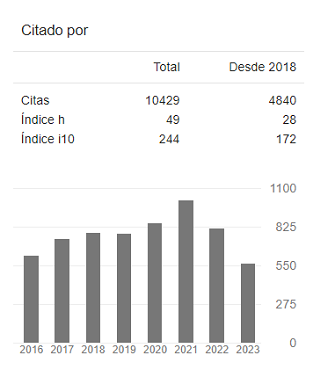Recibido: 28 de agosto de 2023; Aceptado: 31 de octubre de 2023; : 1 de diciembre de 2023
Resumen
En los últimos años las cianobacterias se han convertido en una fuente importante de metabolitos secundarios. El presente trabajo colectó, aisló, identificó y caracterizó el potencial antimicrobiano de dos especies filamentosas de cianobacterias de la Amazonia colombiana. Se utilizaron técnicas microbianas de rayado en medio sólido y dilución para obtener las cepas con una sola especie. La identificación se realizó por caracteres morfológicos y secuenciado de la sección conservada Cya de gen 16s. Se identificaron por reacción en cadena de la polimerasa (PCR) la presencia de genes que secuencian policétidos sintasas (PKS) y péptidos no ribosomales sintetasas (NRPS) asociados a rutas productoras de metabolitos secundarios. Se evaluó la actividad antimicrobiana de extractos polares y no polares con una batería Gram positiva, dos Gram negativas y una cepa fúngica. Se identificó la cepa 5 como Limnothrix vacuolifera (Skuja) Komárek y la cepa 9 como Lymnothix planktonica (Wołoszyńska) Meffert. En las dos cepas se encontraron PKS y NRPS. Finalmente, los extractos polares inhibieron el crecimiento de Enterococcus faecalis, Escherichia coli y Klebsiella pneumoniae y una cepa Penicillium sp. Los extractos no polares no mostraron actividad antimicrobiana. Es el primer registro de estas para la Amazonia colombiana y el primer registro de actividad antibiótica de cianobacterias continentales colombianas.
Palabras clave:
Amazonia colombiana, antibiótico, antifúngicos, cianobacteria, metabolitos secundarios.Abstract
In recent years Cyanobacteria have become an important source of secondary metabolites. The present work collected, isolated, identified, and characterized the antimicrobial potential of two filamentous species of cyanobacteria from the Colombian Amazon. Microbial techniques streaking in solid medium and dilution in liquid medium were used to obtain strains with a single species. Identification was performed by morphological characters and sequencing the conserved Cya section of the 16s gene. The presence of genes sequencing polyketide synthases (PKS) and non-ribosomal peptide synthetases (NRPS) associated with secondary metabolite-producing pathways were identified by PCR. The antimicrobial activity of polar and non-polar extracts was evaluated with one Gram-positive and two Gram-negative bacteria and a fungal strain. Strain 5 was identified as Limnothrix vacuolifera (Skuja) Komárek and strain 9 as Lymnothix planktonic (Wołoszyńska) Meffert. In both strains PKS and NRPS were found. Finally polar extracts inhibited the growth of Enterococcus faecalis, Escherichia coli and Klebsiella pneumoniae and one strain Penicillium sp. Non-polar extracts didn’t show antimicrobial activity. This is the first record of these for the Colombian Amazon, and the first record of antibiotic activity of Colombian continental cyanobacteria.
Keywords:
antibiotic, antifungal, Colombian Amazon, cyanobacteria, secondary metabolites.Introducción
Las Cyanoprokariotas, comúnmente conocidas como cianobacterias, son organismos microscópicos que carecen de una membrana nuclear definida (procariotes) y poseen la capacidad de realizar fotosíntesis oxigénica (Merel et al., 2013). Aparecieron aproximadamente hace 3500 millones de años y son considerados los precursores de la capa de ozono (O3) que modificó las condiciones atmosféricas de ese entonces (Goldblatt et al., 2006). Como resultado de su historia evolutiva, son organismos altamente complejos morfológica, genética y químicamente (Al-Haj et al., 2016; Peña, 2019). Estos organismos tienen gran importancia ecológica debido a su distribución cosmopolita y su capacidad de fijar nitrógeno atmosférico (Canope et al., 2005; Abed et al., 2009; Prato-Valderrama, 2013) y formar asociaciones simbiontes con hongos, helechos y plantas (Peña, 2019), así como también por el hecho de que son reconocidos como una fuente prolífica de productos naturales biológicamente activos (Singh et al., 2017).
Tradicionalmente, las cianobacterias se han clasificado con base en caracteres morfológicos como: el ancho, la forma y disposición de los tricomas; el tamaño de las células; los planos de división; la pigmentación; y la presencia de caracteres como vacuolas de gas y vaina (Baker, 1992; Valerio et al., 2009). Sin embargo, debido a la flexibilidad de adaptación de las cianobacterias, estas pueden llegar a presentar cambios fisiológicos debido a las condiciones del clima, hábitat, disponibilidad de recursos, competencia por los mismos e inclusive en condiciones controladas de laboratorio (Pineda-Mendoza et al., 2011). Por tal motivo, se ha evidenciado la necesidad de complementar la identificación tradicional con técnicas de biología molecular, debido a que el genoma no se ve afectado en la misma proporción por factores externos (Al-Haj et al., 2016). Esta identificación se realiza a partir del gen 16S rRNA, ya que es la macromolécula más ampliamente utilizada en estudios de filogenia y taxonomía bacterianas (Al-Haj et al., 2016).
Durante décadas, las investigaciones en cianobacterias se centraron en el estudio de su ecología, morfología, fisiología y filogenia (Abed et al., 2009). Sin embargo, en las últimas décadas los estudios realizados se han enfocado en la búsqueda de moléculas con potencial biotecnológico, hasta descubrir en menos de 40 años más de 800 metabolitos diferentes, útiles en biomedicina, sector agropecuario, cosmética e investigaciones básicas (Colla et al., 2007; Sekar y Chandramohan, 2008). Entre los metabolitos de interés que se han encontrado en cianobacterias están: spirulán calcio (Arthrospira platensis), fuerte inhibidor de la actividad reversotranscriptasa del VIH; nostoflan (Nostoc flagilliforme), antiviral probado desde el papiloma hasta la gripa; sulfoglicolípidos libres de fósforo (Scytonema sp.), antiviral inhibidor de la ADN polimerasa; criptoficinas (Nostoc sp.), de efecto anticancerígeno; la dolastatina 15 (Lyngbya sp.), para el tratamiento del cáncer, entre otros (Llópiz-Arzuaga, 2016).
Las funciones de los metabolitos secundarios en sus células son desconocidas, pero se cree que la producción de un metabolito específico genera ventajas al productor dentro de un ecosistema complejo y competitivo (Van Apeldoorn et al., 2007). Algunos de los metabolitos secundarios de las cianobacterias son tóxicos para animales y humanos, por lo que a este tipo de metabolitos se los conoce como cianotoxinas (Méjean y Ploux, 2013).
De igual manera, se ha estudiado la presencia de los genes involucrados en la codificación de metabolitos secundarios, como los policétidos sintetizados por las llamadas policétido sintasas (Polyketide synthases - PKS), y los péptidos no ribosomales sintetizados por sintetasas de péptidos no ribosomales (nonribosomal peptide-synthetase - NRPS) (Cerro, 2017). Estos dos tipos de metabolitos, al igual que los compuestos híbridos de estas dos vías biosintéticas, son los producidos mayoritariamente por las cianobacterias (Tan, 2007). Estos últimos, los productos mixtos entre las rutas biosintéticas de los NPRS y los PKS, son los más importantes en el descubrimiento de nuevos compuestos (Bayona, 2014; Cano, 2018; Peña, 2019).
En la Amazonia, el estudio de los metabolitos secundarios (MS), con su potencial biotecnológico y bioprospección, se ha venido desarrollando en la última década principalmente en países como Brasil y Perú (Fiore et al., 2005; Torres et al., 2020; Gomes et al., 2021). Sin embargo, aunque a la fecha no se tiene un registro publicado de trabajos realizados en MS de cianobacterias en la Amazonia colombiana, se hace referencia a las mismas en trabajos sobre la biota acuática; el uso, manejo y gestión de cuerpos de agua; limnología fluvial; y alteración de ambientes acuáticos (Prieto y Arias, 2007).
El presente trabajo tiene como objetivos: colectar, aislar, identificar y cultivar in vitro cianobacterias provenientes de los alrededores de la ciudad de Leticia, Amazonia colombiana; determinar la presencia de genes que codifican para enzimas productoras de metabolitos secundarios; y realizar pruebas de actividad antimicrobiana de extractos de las cianobacterias obtenidas.
Materiales y métodos
Colecta de cianobacterias
Se recolectaron muestras en cinco locaciones de lagos, cuerpos de agua estacionales en sectores frente a la carretera (zona de drenaje) en la periferia del municipio de Leticia, Amazonas (Localización 1: 4° 11' S y 69° 56' O; Localización 2: 4° 10' S, y 69° 56' O; Localización 3: 4° 10' S y 69°56' O; Localización 4: 4° 6' S y 69° 56' O; Localización 5: 4° 6' S y 69° 58' O), a una altitud de 82 m s. n. m., en el recorrido de la vía Leticia-Tarapacá, desde el km 2 hasta el km 17. Las jornadas de recolección fueron efectuadas entre mayo y julio del año 2020 y entre diciembre de 2020 y abril de 2021.
Las muestras se tomaron manualmente y fueron depositadas en tubos Falcon de 50 mL con agua del lugar de procedencia y llevadas inmediatamente al Laboratorio de Gestión y Manejo de Humedales de la sede Amazonia de la Universidad Nacional de Colombia, donde se dejaron en reposo en condiciones ambientales por 24 horas. Después fueron transferidas a tubos Falcon de 15 mL con 5 mL de medio nutritivo BG-11 (Andersen, 2005), previamente esterilizado mediante autoclave a una temperatura de 121 °C durante 60 min a 103 kPa. Las muestras se dejaron en adaptación a las condiciones del laboratorio: fotoperiodo 12:12 luz/oscuridad, 25 °C +/- 2° C, para finalmente ser sembradas en Erlenmeyer de 250 mL con 150 mL de medio nutritivo BG-11 y agitación por burbujeo con bomba de 80-100 L, aire filtrado y membrana de poro de 1 µm.
Aislamiento de cepas y producción de biomasa
De las cianobacterias que sobrevivieron al periodo de adaptación se extrajo una muestra de filamentos por cada morfotipo presente y se realizó la siembra en medio nutritivo BG-11 sólido, empleando el método de estriado en placas y repliques continuos de acuerdo con Andersen (2005). Adicionalmente se tomaron conjuntos de filamentos y se sembraron en recipientes de vidrio de 250 mL con 200 mL de medio BG-11 líquido y agitación por burbujeo con bomba de 80-100 L, aire filtrado y membrana de poro de 1 µm, con repiques seriados de las especies que sobrevivían. Se realizaron observaciones por medio del microscopio óptico Olympus CX31 para la determinación del grado de contaminación de las muestras y, de este modo, continuar con los repiques. Luego de la ejecución de varios repiques por rayado en agar, se inició el aislamiento de cepas puras empleando la técnica del cubo de agar invertido. De las cepas aisladas se hizo la producción de biomasa en cultivos en medio nutritivo líquido, bajo las condiciones de fotoperiodo 12:12 luz/oscuridad, 25 °C +/- 2 °C y agitación por burbujeo con aire filtrado, por un periodo de tres meses.
Identificación de las cepas
La identificación taxonómica de las especies aisladas se realizó mediante observación en un microscopio óptico Olympus CX31, aplicando las claves taxonómicas especializadas (Komárek y Anagnostidis, 2005; Komárek et al., 2014).
Las pruebas moleculares se realizaron en el Laboratorio de Cultivo de Algas de la Universidad Nacional de Colombia, sede Bogotá. Para la identificación molecular se utilizaron 0,2 g de biomasa fresca y se empleó el kit Quick-gDNA TM 10 MiniPrep (ZYMO Research Corp, Irvine, Estados Unidos), siguiendo el protocolo establecido para la extracción de ADN genómico (Cano, 2018; Peña, 2019). Se utilizó como marcador el gen bacteriano 16S de la unidad pequeña del ribosoma. La amplificación se realizó con dos cebadores intermedios, el CYA 106F (CGGACGGGTGAGTAACGCGTGA) y el CYA781R, una combinación de los dos cebadores reverse CYA781 a y b (GACTAC(T/A)GGGGTATCTAATCCC(A/T)TT) y el CYA359 (GGGGAAT(C/T)TTCCGCAATGGG) (Núbel et al., 1997). Todas las reacciones se realizaron en un termociclador MyCyclerTM (Bio-Rad Laboratories Inc., Hercules, CA, EE. UU.) en alícuotas de 20 µL que contenían 10 µL de PCR mix-100 2X (Corpogen, Colombia), 1 µL de cebador F, 1 µL de cebador R (cada cebador a una concentración de 10 µM), 1 µL de ADN y agua grado biología molecular hasta un volumen final de 20 µL. Los perfiles de PCR incluyeron una desnaturalización inicial a 94 °C durante 4 minutos, seguidos de 35 ciclos de 94 °C durante 30 s, 53 °C por 30 s y 72 °C durante 45 s, y una extensión final a 72 °C durante 6 min. Para purificar los productos de PCR se utilizó el kit Direct-Gel-Spin DNA Recovery (ABM Good, Canadá), a partir de las bandas en gel de agarosa al 1,5 %. Los productos purificados de PCR se enviaron a la casa comercial SSigMOL (Instituto de Genética, Universidad Nacional de Colombia, Sede Bogotá), para el respectivo secuenciamiento del gen ribosomal 16S. El número de bases de los amplicones fue de 675 pb aproximadamente. Las secuencias se editaron usando el programa Geneious 4.8.2 y las comparaciones de secuencias se llevaron a cabo utilizando las bases de datos BLAST del Centro Nacional de Información Biotecnológica (NCBI).
Detección de genes NRPS y PKS
Se utilizaron dos pares de primers específicos para la amplificación de genes de los NRPS y PKS. Estos cebadores apuntan directamente a los dominios de adenilación (A) y cetosintasa (KS), respectivamente: DKF (GTGCCGGTNCCRTGNGYYTC) y DKR GCGATGGAYCCNCARCARMG) para PKS (Moffitt y Neilan, 2001) y MTF2 (GCNGGYGGYGCNTAYGTNCC) y MTR (CCNCGDATYTTNACYTG) para NRPS (Neilan et al., 1999). El ADN de una cepa de Microcystis aeruginosa (LEGE 00063, CIIMAR) se utilizó como control positivo para la presencia de los genes de los dominios de los NRPS y PKS. Los ciclos de PCR consistieron en una etapa inicial de desnaturalización a 94 °C durante 4 min, seguido de 30 ciclos de 1 min a 94 °C; 30 seg a 54 °C para NRPS, y 44 °C para PKS, seguido de 1 min a 72 °C. Por último, se realizó una extensión final a 72 °C durante 7 min. Todas las reacciones de PCR se realizaron con un termociclador MyCyclerTM (Bio-Rad Laboratories Inc., Hercules, CA, EE. UU.) en volúmenes totales de 20 µL que contenían 10 µL de Kit PCR-100-2X (Corpogen, Colombia), 1 µL del primer reverse, 1 µL de primer forward, 0,5 µL de ADN y agua de biología molecular hasta un volumen final de 20 µL. Los amplicones de PCR se analizaron por electroforesis en gel de agarosa al 1,5 % con un marcador de tamaño molecular de 100 pb (Invitrogen, EE. UU.) para verificar el tamaño del fragmento amplificado (Peña, 2019).
Preparación de extractos
Se recuperó la biomasa de interés mediante remoción del material biológico y se depositó en tubos Falcon de 25 mL. Cada muestra fue liofilizada y pesada. El material obtenido, dependiendo del peso final en seco, fue dividido en dos partes iguales, las cuales fueron sometidas a procesos de extracción de metabolitos polares y no polares. Para los extractos polares se utilizó como solvente metanol (10 mL) y para extractos no polares se usó hexano (10 mL). Este proceso se realizó por triplicado para cada una de las cepas. Los extractos fueron concentrados mediante el uso de un Reacti-VapTM Evaporator TS18825 (Thermo Scientific), y el sólido resultante fue resuspendido en DMSO; cada uno de los extractos se llevó a una concentración final de 10 mg/mL.
Pruebas antimicrobianas y antimicóticas
Las pruebas antimicrobianas se desarrollaron en el Laboratorio de Microbiología del Departamento de Biología de la Universidad Nacional de Colombia, sede Bogotá. Las pruebas de inhibición de crecimiento se realizaron por la técnica de pozuelos. Se dispuso de tres cepas bacterianas: una Gram positiva (Enterococcus faecalis) y dos Gram negativas (Escherichia coli y Klebsiella pneumoniae) y una cepa fúngica (Penicillium sp.) procedentes de la colección del Laboratorio de Microbiología de la Universidad Nacional de Colombia, sede Bogotá, en medio PDA (potato dextrose agar) para hongos y Agar Müller Hinton para las bacterias. Una vez inoculadas las cajas de Petri con los microorganismos, se realizaron pozuelos con un sacabocados y en se agregó 1 µL de extracto. Para el análisis antibacteriano se realizó seguimiento cada hora durante 24 horas y para el análisis antifúngico se realizó seguimiento a partir de las 72 horas de inoculado el medio y se determinó el radio de inhibición del crecimiento alrededor del pozuelo y el tiempo de inhibición.
Resultados
Aislamiento e identificación de cepas
Del total de las muestras colectadas el 24 % presentó muerte celular 12 horas después del tiempo de recolección y el 64 % superó el tiempo de adaptación a las condiciones del laboratorio; sin embargo, al ser muestras ambientales, otros microorganismos, como algas, hongos y bacterias, colonizaron los medios de cultivo rápidamente e impidieron el crecimiento de las cianobacterias por muerte celular. El 12 % restante de las muestras recolectadas se adaptó con éxito a las condiciones de laboratorio y al medio de cultivo. Finalmente se logró con éxito aislar y cultivar dos cepas de cianobacterias: Cepa 5 Limnothrix vacuolifera y Cepa 9 Limnothrix planktonica.
Cepa 5 Limnothrix vacuolifera. Las cianobacterias de este género presentan filamentos solitarios, flotantes, largos y más o menos rectos, con vainas finas, incoloras, firmes y lisas, superpuestas a los extremos del tricoma; tricomas poco o muy leves e indistintamente constreñidos en las paredes transversales, no atenuados hacia los extremos, de 1,3 a 2 µm de ancho. Además, las células claramente son más largas que anchas (5-23 µm de largo), de un verde amarillento o azul verdoso, con contenido celular homogéneo o pocos gránulos pequeños dispersos, aerótopos en las paredes transversales, mientras que las células apicales son redondeadas, sin caliptra ni pared celular engrosada (Figura 1) (Komárek y Anagnostidis, 2005).
Figura 1: Limnothrix vacuolifera (mediciones del filamento, 400x).
Figura 2: Limnothrix planktonica (mediciones del filamento, tinción azul de metilo, 400x).
La secuencia que se obtuvo del gen ribosomal 16s fue: CGTGAGGGACGAAGGCCTGTGGGTTGTAAACCTCTTTTCTCAGGGAAGAAGATCTGACGGTACCTGAGGAATCAGCATCGGCTAACTCCGTGCCAGCAGCCGCGGTAAGACGGAGGATGCAAGCGTTATCCGGAATTATTGGGCGTAAAGCGTCCGCAGGCGGTCTCGTAAGTCTGTCTTTAAAGCGTGGAGCTTAACTCCATAAAGGGGATGGAAACTGTGAGACTAGAGGTAGGTAGGGGTAGAAGGAATTCCCAGTGTAGCGGTGAAATGCGTAGATATTGGGAAGAACACCAGCAGCGAAGGCGTTCTACTGGACCAAACCTGA. Usando BlastN la secuencia fue 99,7 % similar a Limnothrix sp. CENA111 (Genbank: EF088336.1), Limnothrix sp. na1 (Genbank: GU368112.2) y Limnothrix sp. CENA545 (Genbank: KF246506.1). La cepa ingresó a la colección LAUN RNC 285 de la Universidad Nacional de Colombia con el código LAUN087.
Cepa 9 Limnothrix planktonica. Las cianobacterias de este género se caracterizan por presentar tricomas solitarios, isopolares, generalmente de vida libre, rectos, ligeramente curvados o flexuosos, que constan de numerosas células cilíndricas, principalmente alargadas, no contraídas o muy ligeramente contraídas en paredes transversales delgadas e indistintas, de 1 a 6 µm de ancho, no atenuadas en los extremos, sin vainas hialinas finas, sin falsa ramificación, inmóviles. Todas las células tienen la misma morfología, más largas que anchas, tonalidad azul verdosa pálida y amarillenta. Todas aptas o divisorias, con aerótopos apicales o centrales y tilacoides más o menos dispuestos periféricamente (Figura 2) (Komárek y Anagnostidis, 2005).
La secuencia que se obtuvo del gen ribosomal 16s fue: CGTCAGGTTTGGTCCAGTAGAACGCCTTCGCTGCTGGTGTTCTTCCCAATATCTACGCATTTCACCGCTACACTGGGAATTCCTTCTACCCCTACCTACCTCTAGTCTCGCAGTTTCCATCCCCTTTATGGAGTTAAGCTCCACGCTTTAAAGACAGACTTACGAGACCGCCTGCGGACGCTTTACGCCCAATAATTCCGGATAACGCTTGCATCCTCCGTCTTACCGCGGCTGCTGGCACGGAGTTAGCCGATGCTGATTCCTCAGGTACCGTCAGATCTTCTTCCCTGAGAAAAGAGGTTTACAACCCACAGGCCTT. Usando BlastN, la secuencia fue 100 % similar a la cepa Limnothrix planktonica LEGE 15497 (Genbank: MF629814.1), Limnothrix planktonica KLL-C001 (Genbank: KP726240.1). La cepa ingresó a la colección LAUN de la Universidad Nacional de Colombia con el código LAUN088.
Detección de genes NRPS y PKS
La cepa 5 L. vacuolifera y la cepa 9 L. planktonica amplificaron el dominio KS (cetosintasa) presente en las enzimas productoras de PKS y el dominio de adenilación (A) de los NRPS, confirmados con el control positivo de M. aeruginosa.
Actividad antimicrobiana y antimicótica
Para definir la respuesta positiva de un extracto se evaluó la formación de un halo de inhibición de crecimiento de diámetro igual o superior a 0,5 cm con una duración superior a 24 horas. Para el extracto polar de la cepa 5 L. vacuolifera, se observó la formación de un halo de inhibición de crecimiento de 1 cm de diámetro para todas las bacterias, sin efecto para el hongo Penicillium; en el extracto no polar no se observó ningún efecto inhibitorio para las tres bacterias y el hongo. Cada una de las pruebas se hizo por duplicado.
Para la cepa 9 L. planktonica en el extracto polar se observó la formación de un halo inhibitorio de crecimiento de 0,6 cm de diámetro para las bacterias Gram negativas E. coli y K. pneumoniae y también hubo inhibición del crecimiento para el hongo Penicillium, pero sin efecto inhibitorio de crecimiento sobre la bacteria Gram positiva Enterococcus faecalis; finalmente el extracto no polar no tuvo efecto inhibitorio de crecimiento en ninguno de los microorganismos testados. Todas las pruebas se hicieron por duplicado.
Discusión
Las cianobacterias son organismos renuentes a su cultivo en ambientes controlados, más aún si se precisa lograr cultivos axénicos o unialgales (González-Gil et al., 1999), debido a que muchos de estos crean asociaciones, entrelazando los filamentos embebidos en una matriz mucilaginosa constituida por mucopolisacáridos y proteínas, lo que dificulta su separación e incluso les impide crecer de manera independiente, debido a las relaciones simbióticas establecidas entre dichas especies (Whitton y Potts, 2002). Del total de las especies recolectadas, al menos el 40 % correspondió a especies unicelulares, como Merismopedia sp. y Chroococcus sp., las cuales presentaron muerte celular a los pocos días de haberse sembrado en medio BG-11 sólido, mientras que las filamentosas tuvieron mayor éxito, pero al final solo se logró aislar dos especies filamentosas. Este resultado se debe a la gruesa capa que recubre sus tricomas, característica que les confiere mayor tolerancia a los cambios ambientales (García-Pichel et al., 2001), mientras que las especies unicelulares se protegen y se mantienen unidas con una secreción extracelular de mucoproteínas, la cual mostró menor grado de resistencia a la desecación que la cubierta de las filamentosas, redundando en que las especies unicelulares no pudieran sobrevivir y/o separarse de las otras especies del cultivo (Pérez, 2003).
La cianobacteria L. planktonica fue identificada por primera vez en la Amazonia brasilera por Cunha de Oliveira et al. (2019). En la Amazonia colombiana es el primer registro de identificación de esta a nivel molecular. El género Limnothrix se puede encontrar comúnmente en cuerpos de agua eutrofizados (marinos y de agua dulce), asociado a cianobacterias del género Oscillatoria y la especie Plantothrix agardii (Komárek y Anagnostidis, 2005; Komárek et al., 2014). Son organismos halotolerantes, lo que les confiere mayor adaptación a ambientes con distintos porcentajes de salinidad (Berland et al., 1989), siendo los de menos salinidad los más adecuados para la producción de pigmentos como ficocianinas, lípidos, carbohidratos, carotenos y exopolisacáridos (Lemus et al., 2013).
En el 100 % de las cepas se detectó presencia de secuencias del dominio KS y el dominio A, lo que permite concluir que en las cianoprocariotas aisladas se encuentran rutas metabólicas productoras de posibles metabolitos secundarios, mientras que la presencia de estos genes en las cepas indica potencial biotecnológico, acorde a los resultados de las pruebas antimicrobianas y antifúngicas (El Samak et al., 2018). Estos resultados son acordes a trabajos realizados anteriormente con cianobacterias filamentosas; sin embargo, se resalta que la presencia de PKS es mayor en comparación a la de NRPS. Debido a ello, es necesario realizar estudios en más especies de cianobacterias para corroborar y ampliar la información (Brito et al., 2015; Christiansen et al., 2001; El Samak et al., 2018). Las cianobacterias pertenecientes a los géneros Limnothrix, Oscillatoria, Nostoc, Anabaena, Spirulina, Arthrospira, Phormidium, Synechocystis y Synechococcus, entre otras, han sido ampliamente estudiadas, debido a la elevada producción de bioactivos (Thajuddin y Subramanian, 2005), de los cuales se destaca: el uso como complemento alimentario (Grewe y Pulz, 2012), en biofertilizantes (Irisarri et al., 2001) y como biorremediadores de ambientes eutrofizados (Ruangsomboon et al., 2013), además de ser indicadoras de contaminación orgánica (Peinador, 1999) y productoras de una amplia variedad de compuestos bioactivos con posible interés farmacéutico (Abed et al., 2009; Rastogi y Sinha, 2009) y de energía en forma de hidrógeno (Min y Sherman, 2010).
La actividad antibiótica que se encontró en las dos cepas de Limnothrix es la primera registrada para Colombia de cianobacterias continentales y muestra el potencial de estos organismos en una época donde incrementan las bacterias resistentes a antibióticos tradicionales. La mayoría de las investigaciones se centran en antivirales y anticancerígenos; por eso se han caracterizado pocos metabolitos con actividad antibiótica provenientes de cianobacterias, como la nascomina (Nostoc commune), el diterpenoide norbietano (Microcoleus lacustris), el compuesto aromático policlorado ambigol C (Fischerella ambigua), compuestos fenólicos (Nostoc muscorum), y un número alto de cianotoxinas (Llópiz-Arzuaga, 2016). La región amazónica es mundialmente conocida por ser una fuente permanente de bioproductos nuevos a partir de plantas, animales y algunos microorganismos; sin embargo, en la Amazonia colombiana la mayoría de los trabajos se basan en usos ancestrales de las especies vegetales o en la búsqueda de nuevos productos agropecuarios. Con el presente trabajo se muestra el potencial farmacológico que pueden tener las cianobacterias de esta región, ya que seguramente se pueden encontrar muchos más metabolitos con diferentes utilidades. Las comunidades locales y entidades académicas y de investigación pueden encontrar en las cianobacterias un nuevo espacio económico o fuente de descubrimientos que potencien la sociedad de Leticia y la Amazonia colombiana en general.
Conclusiones
Las cianoprocariotas filamentosas L. vacuolifera y L. planktonica caracterizadas para la Amazonia colombiana son microorganismos cultivables en condiciones controladas, cuyos genes codifican a metabolitos secundarios para policétidos y péptidos no ribosomales y sus extractos polares inhiben el crecimiento de bacterias Gram positivas y negativas, así como el hongo Penicillium, lo cual demuestra un alto potencial biotecnológico para la búsqueda de metabolitos secundarios con uso farmacéutico.
Los resultados de este trabajo son los primeros registros para la Amazonia colombiana, lo que confirma la importancia de los estudios de bioprospección para esta región.

